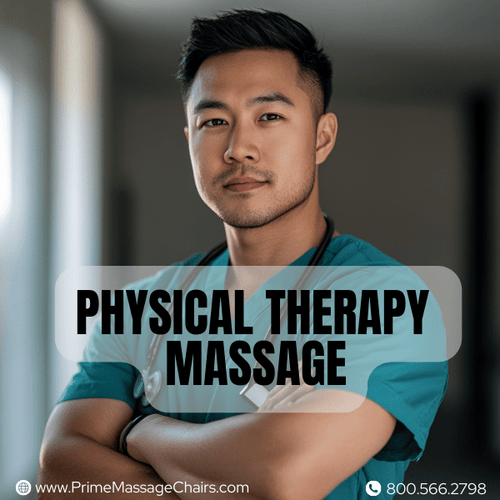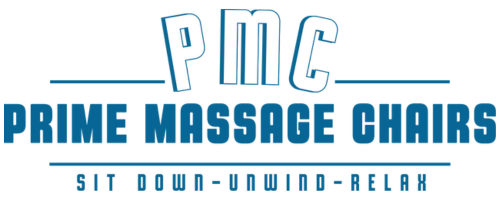
What is a Physical Therapy Massage?
Physical therapy massage may be a powerful tool for addressing chronic pain, promoting relaxation, and restoring your body’s natural balance.
This blog will show you how a physical therapy massage could help with alleviating pain and promote faster muscle recovery.
Keep reading to learn more!
Common Techniques in Physical Therapy Massage
In physical therapy massage, therapists use special moves to help muscles and skin.
They press, stretch, and move the body in ways that feel good and aid healing.
Trigger Point Release
Trigger point release targets tight bands in muscles, often referred to as myofascial trigger points, which may cause referred pain to other areas of the body.
This occurs due to the sensitivity of these points and their impact on the surrounding nervous system, a phenomenon supported by research in muscle physiology.

Think about your neck, shoulders, lower back, and hips hurting because a tiny spot in your muscle is too tense.
Therapists may use direct pressure on these spots for 30 to 90 seconds to ease the tension.
This method may help with pain caused by overusing muscles, sitting too long, bad posture, or stress.
Tools like tennis balls may help reach tough spots during self-massage at home. Also, sleeping with proper body support might stop these tight spots from forming in the first place.
With regular care and helpful tools, managing trigger points becomes part of keeping muscles healthy and pain-free. Proper care of our bodies may prevent discomfort before it starts.
Myofascial Release
Myofascial release is a massage technique that helps with pain and tension in your muscles and soft tissue.
This method uses gentle, steady pressure to stretch and loosen the myofascial tissues — these are like cling wrap around your muscles.
It's all about easing discomfort and getting your body to move more freely.
With foam rollers or massage balls, physical therapists may target those tight spots that cause you trouble.
This treatment boosts muscle recovery, eases pain, and helps you move better.
After sessions of myofascial release, patients may often find they have less pain and more flexibility.
It makes daily activities easier by improving how well your muscles work together.
So whether you're recovering from an injury or just want to keep your body running smoothly, this therapy may be a big help.
Soft Tissue Mobilization
Soft tissue mobilization is a key part of physical therapy massage. It uses hands-on methods to help heal and better body movement.
This approach focuses on muscles, tendons, bands around joints, and skin coverings that might get shorter from injury or overuse.
Therapists may stretch and move these parts to relax muscles and improve how you move.

It works well for muscle pulls, neck and back soreness, and pain after surgery.
By stretching and moving the soft parts of your body in special ways, it may help to ease tightness and make moving easier.
Plus, it may lower pain in places like legs, arms, and the back by making blood flow better there.
Key Benefits of Physical Therapy Massage
Physical therapy massages may provide significant health benefits, aiding in pain relief, improving mobility, and enhancing muscle flexibility.
They ease pain, boost how much you can move, and make muscles more flexible.
This treatment uses hands-on methods to work on your body's soft parts like muscles and tendons.
By improving circulation, it aids in reducing discomfort and alleviating stiffness, which may complement other massage benefits discussed in this article.
So, if getting back on your feet faster after an injury is the goal, this kind of massage might be just what you need.
Reduce Pain and Inflammation
- Massage in physical therapy aids in reducing discomfort and swelling. This is attributed to therapists focusing on muscles and joints.
- They utilize particular movements to alleviate tension. These techniques may improve circulation and curtail inflammation.
- For individuals suffering from fibromyalgia or sports-related injuries, this type of massage may be extremely beneficial.
- It not only decreases joint inflammation but also facilitates better circulation throughout the body.
- This results in an increased delivery of oxygen to aching areas, thus lessening the pain.
Improve Flexibility and Range of Motion
Easing pain and swelling sets the stage for the next big benefit: better movement and flexibility.
Physical therapy massage plays a vital role in making muscles more flexible. It helps people move easier and feel less stiff.
This is key in keeping injuries at bay.

Regular massage sessions may lead to significant improvements in flexibility and range of motion.
Both hands-on massages by therapists and using foam rollers may make your body more limber.
Studies have shown these methods work well to increase how far you can move.
Plus, after getting massages, muscles show more strength and endurance, especially two days later.
Whether you're an athlete or someone just looking to stay active without pain, this means a lot for your overall health.
Lessen Scar Tissue
Scar tissue forms after injuries like surgery or breaks. For six to eight weeks, it needs proper fixing to work well again.
Physical therapy massage may use cross-friction and myofascial release for this. These ways help make the scar softer and less itchy.
Research shows these massages make scars better, as supported by a study published in the Journal of Physical Therapy Science, which highlights improvements in scar pliability and reduced discomfort after targeted massage interventions.
They also stop scars from limiting movement. Physical therapists do massage to target these hard spots in your body’s healing parts.
This makes you move easier and feel less pain.
How Physical Therapy Massage Supports Recovery
Physical therapy massage may boost healing by making blood flow better. This way, muscles relax and stress goes down.
Think about giving it a try to speed up your recovery.
Enhances Blood Circulation
Improving blood flow is key in healing. Physical therapy massage does this well. It may bring more oxygen and nutrients to hurt areas.
This speeds up getting better. Deep tissue massage goes deep into muscles. It helps with pain and gets blood moving.
Getting massages often improves flexibility, which may complement efforts to enhance range of motion and reduce the likelihood of future injuries.
Mixing physiotherapy with massage tackles recovery all around.
Promotes Relaxation and Stress Reduction
Boosting blood flow, which alleviates inflammation and promotes healing, also aids in bringing calm and reducing stress, offering comprehensive recovery support.
This is big for healing, especially for athletes. Massage may make you feel relaxed and less tired after activities.

One session may drop cortisol, a stress hormone, by 40%, as demonstrated in a study published in the International Journal of Neuroscience, which highlights the effects of massage on stress reduction.
That's a lot! Also, people getting massages may tend to feel happier. They say they're less sad, anxious, and worn out.
Regular massage may keep your mood up and helps your body rest well.
When to Consider Physical Therapy Massage
Physical therapy massage may be good for people feeling pain, tight muscles, or who can't move easily.
It may help your body heal in a natural way during physical rehab. You might need it if you got hurt playing sports or have a muscle problem like stiffness or back pain.
Adding massage to your treatment plan makes healing faster and better. It's useful for improving blood flow and helping with conditions like arthritis or tendinitis.
If regular activities are hard due to pain or lower movement, seeing a therapist for this type of massage could help a lot.
FAQs
What is physical therapy massage and how can it enhance recovery?
Physical therapy massage may use specific techniques to help with pain management, improve mobility, promote relaxation, and enhance overall physical function.
It's often used in rehabilitation after musculoskeletal injuries or surgery like joint replacement.
How Does a Massage Therapist Use Different Techniques During a Session?
A skilled massage therapist may utilize a variety of manual techniques such as effleurage, friction massage, or even stone massage.
These methods may target the human musculoskeletal system, including bones, joints, and soft tissues like muscle and connective tissue.
Can Physical Therapy Massages Be Helpful for Sports Injuries?
Absolutely! Sports-related issues like sprains, tendinopathy, or delayed onset muscle soreness could greatly benefit from regular physical therapy sessions involving active release therapy and other therapeutic massages.
Does Receiving Physical Therapy Massages Require Any Special Preparation on My Part?
Not really! But remember that your level of comfort matters; so wear clothes allowing easy movement during exercises if you're also doing them as part of your treatment program along with the massages.
Is There Any Difference Between General Relaxation Massages and Those Done by Health Professionals in a Therapeutic Context?
Yes indeed! While both types aim at relieving tension, promoting relaxation, and improving circulation.
Therapies done by trained health professionals are more targeted towards specific conditions using anatomical knowledge for maximum effectiveness.
Will My Insurance Cover These Services?
Mostly yes! Physical Therapy treatments, including massages, are usually covered by most insurance plans, but it's always better to confirm this beforehand with your provider.
Conclusion
Physical therapy massage could help your body heal. It may mix different hand movements to help aid muscle recovery and ease pain.
You could become more flexible, because it cuts down soreness in tissues. This massage could also help blood flow better, helping you relax deeply.
It may be good for after injuries or surgeries to get back on track faster. Physical therapy massage could be a smart health choice for anyone needing relief or quicker recovery.
Disclaimer:
We do not provide medical advice. The content of this article, including text, graphics, and other material, is for informational purposes only. It is not intended to be a substitute for professional medical advice, diagnosis, or treatment. Always seek the advice of your physician or other qualified health provider with any questions you may have regarding a health condition. Never disregard professional medical advice or delay in seeking it because of something you have read in this article or on our website.
